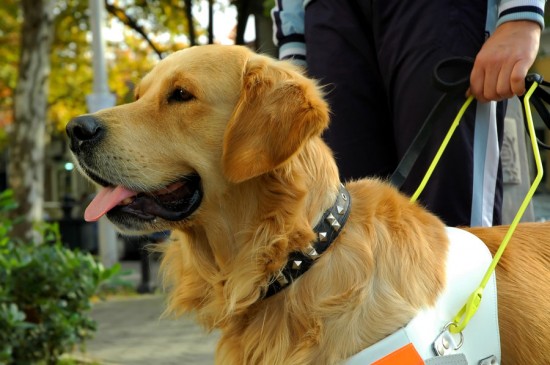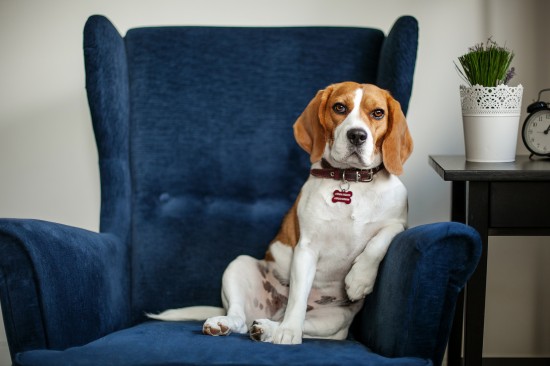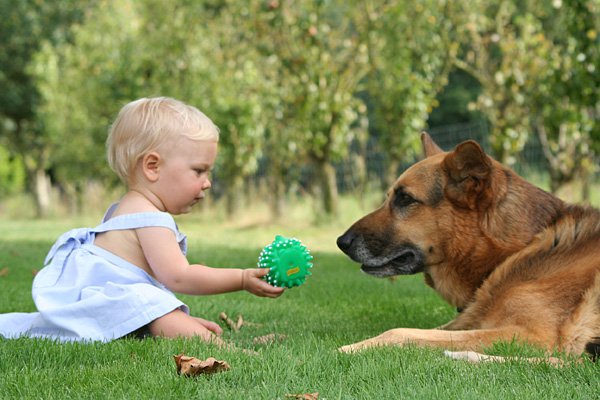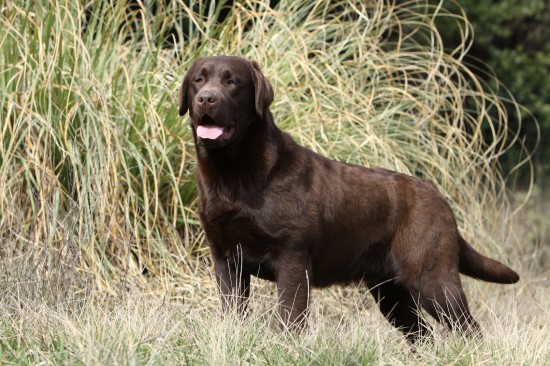

Dogs have been referred to as 'man's best friend' for almost the entire duration of their history of domestication, and for good reason. As well as making great pets and providing unconditional love and companionship for their owners, some dogs also fill vitally important roles assisting mankind in various jobs such as search and rescue, or helping people with disabilities to lead independent lives.
Most of us are familiar with the important role fulfilled by guide dogs for the blind, but did you also know that there are hearing dogs for the deaf, dogs trained to alert people with diabetes to early changes in blood sugar, and to find and assist missing people? Here is a little more information on the work done by various types of assistance dogs in the UK today.
Guide dogs for the blind have a long history of working with man, and references to guide dogs can be found in literature as far back as the 16th century. Guide dogs are trained to help blind or partially sighted people to live independent lives, by enabling them to navigate various obstacles that the owner or handler is unable to see, such as steps, lamp posts and lifts.
In the UK, the Guide Dogs for the Blind organisation breeds and trains dogs with a view to them being successfully placed with a blind or partially sighted handler who would benefit from their assistance, as well as for the companionship that they offer. Currently, around 4,500 people in the UK have a guide dog helping them to go about their day to day lives.
Hearing dogs for the deaf are specially selected for their temperament and intelligence, and trained to alert their deaf or hearing impaired owners or handlers to sounds which they would otherwise not be aware of. Hearing dogs for the deaf are taught to recognise and act on a wide variety of different domestic noises such as the telephone, door bell, smoke alarm and alarm clock, as well as many sounds heard outside of the home such as sirens or alarm bells, and the reversing beep alarm made by some vehicles.
There are currently around 750 deaf and hearing impaired people in the UK today who have their standard of living and independence enhanced by the presence of a hearing assistance dog.
First alert dogs for diabetics are very special dogs which are trained to detect the minute changes in scent that a person gives off when they enter the first stages of hypoglycaemia (low blood sugar) and alert the person concerned of this so that they can act accordingly. First alert dogs for diabetics are still relatively rare within the UK.
Seizure response dogs for epileptics or those with another seizure disorder receive very intensive specialist training in many aspects of protecting and helping the sufferer once a seizure occurs and in the immediate aftermath.
While some seizure dogs become adept at recognising a developing seizure in their owner or handler, this trait is very rare, and a seizure dog's main role is to protect the sufferer throughout and after an attack, and to summon help.
These incredibly clever dogs will remove potential sources of danger from around the person suffering from or recovering from a seizure by dragging it away, and will place themselves between the affected person and any hazards outside of the home to keep the sufferer from becoming injured by them. They also seek out help by finding other people who can assist, or activating a medical alert button or warning system.
Once a seizure has occurred, a first alert seizure dog will attempt to rouse the person who has suffered a seizure from unconsciousness, and stay with them for the duration of an attack and the recovery, providing emotional support and helping to keep their owner calm and ease their disorientation.
Generally, seizure dogs will have some helpful information clearly visible on their collars regarding who their owner is the nature of their medical condition, and instructions for lay people and medical professionals on what to do.
Seizure dogs are fairly uncommon in the UK, as their usefulness in assisting with seizure control and recovery has only recently been discovered, and also as the remit of the many tasks seizure dogs need to perform is so varied and specific that it is difficult to find dogs of the right temperament, intelligence and suitability for training.
Search and rescue dogs work by using their highly sensitive and attuned noses to single out the scent of people or of one particular person among many over a wide area of terrain, and seek out that person, where they have been, and anything that they may have left behind.
Search and rescue dogs are used by many organisations such as the police, mountain rescue, and emergency and disaster relief agencies. Search and rescue dogs often play a vital role in the detection of missing persons, hurt or injured walkers and climbers, victims of avalanche and searches over water.
Sniffer dogs, as search and rescue dogs are sometimes known, either work by air scenting or trail scenting, and following the direction of the scent. Sniffer dogs are classified as either scent discriminating or non scent discriminating, according to whether they can single out the scent of one particular person and track it, or whether they work more broadly to detect any signs of human life or the presence of a human cadaver.
Sniffer dogs working over a wide ranging area or sometimes working in specific circumstances such as avalanche rescue often carry an emergency supply pack on their back for immediate relief of the injured party before help arrives. The St. Bernard search dog used for mountain rescue is often depicted in old pictures and paintings as having a small flask of rum or other warming liquor attached to their chest, although the accuracy of this imagery is disputed- these days they would most likely be found carrying emergency first aid supplies and a flare or whistle for sounding the alarm.
In the vast majority of cases, an assistance dog or service dog will live out its whole life with the owner or keeper that it helps, although occasionally they come up for re homing if they prove to be not fully suited to their role, or their owner suffers from ill health and is unable to keep them any longer.
Several organisations such as the Guide Dogs for the Blind organisation often ask for help from the public in socialising puppies in training, exposing them to a range of potential obstacles, and getting used to living within a home environment.
The Guide Dogs for the Blind Association http://www.guidedogs.org.uk/
Hearing Dogs for the Deaf http://www.hearingdogs.org.uk/
National Search and Rescue Dog Organisation http://www.nsarda.org.uk/
 Why Might A Fearful Dog Suddenly Become Bolder?
Why Might A Fearful Dog Suddenly Become Bolder?
 More Information On The Unusual Toyger Cat Breed
More Information On The Unusual Toyger Cat Breed
 The Best Way to Train a Dog
The Best Way to Train a Dog
 Storing And Serving Your Dog’s Food - Seven Pitfalls To Avoid
Storing And Serving Your Dog’s Food - Seven Pitfalls To Avoid
 Pet Insurance - Ten Do’s And Don’ts To Consider When Protecting Your Pet
Pet Insurance - Ten Do’s And Don’ts To Consider When Protecting Your Pet
 Breed Standards In Dogs - What Do They Encompass?
Breed Standards In Dogs - What Do They Encompass?
Copyright © 2005-2016 Pet Information All Rights Reserved
Contact us: www162date@outlook.com